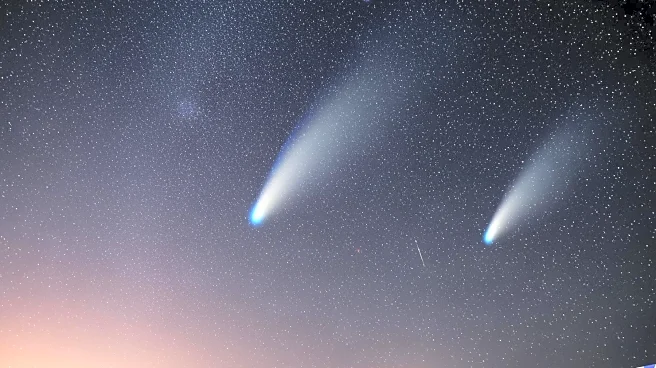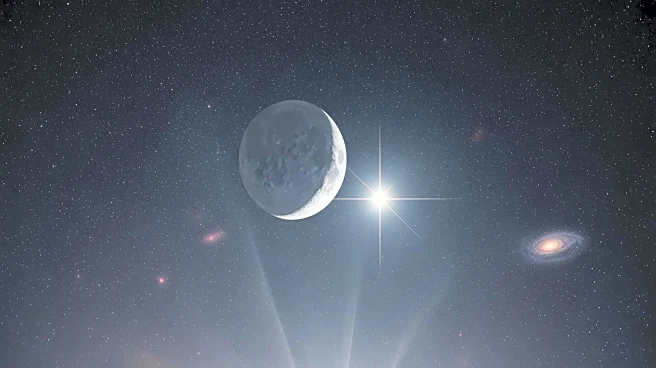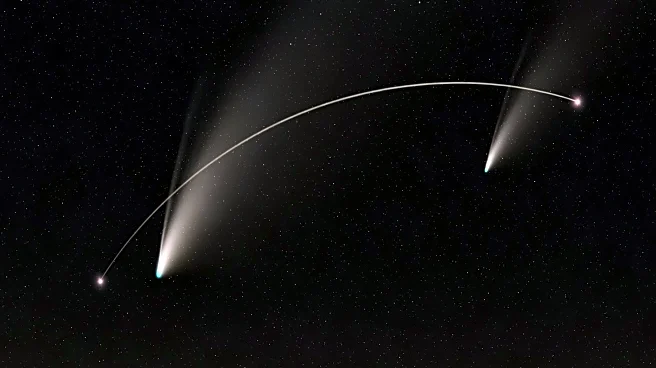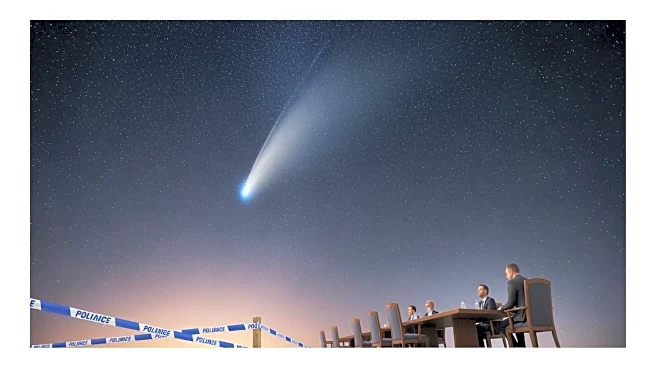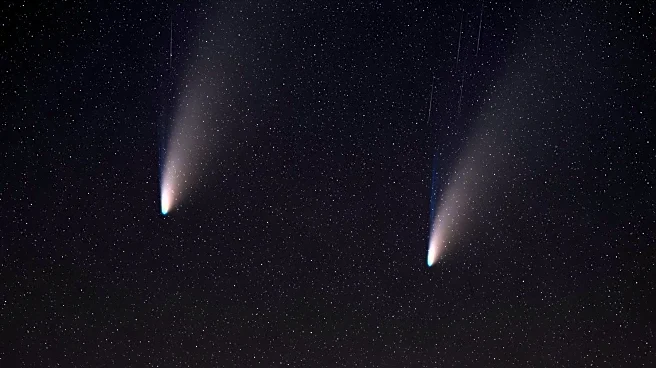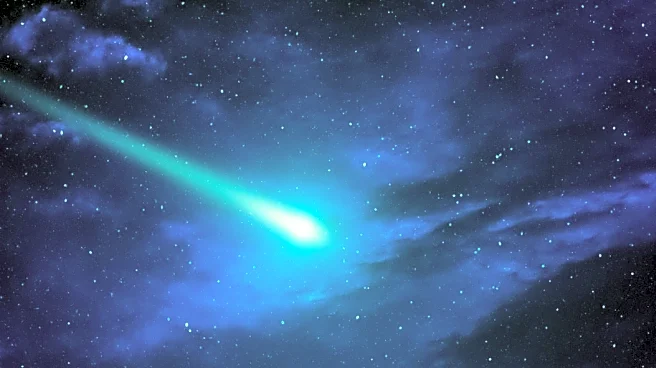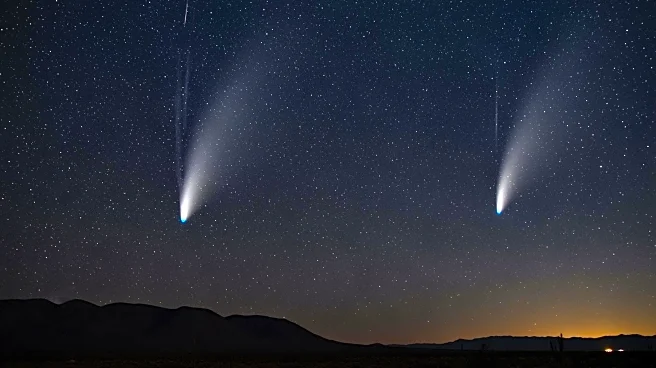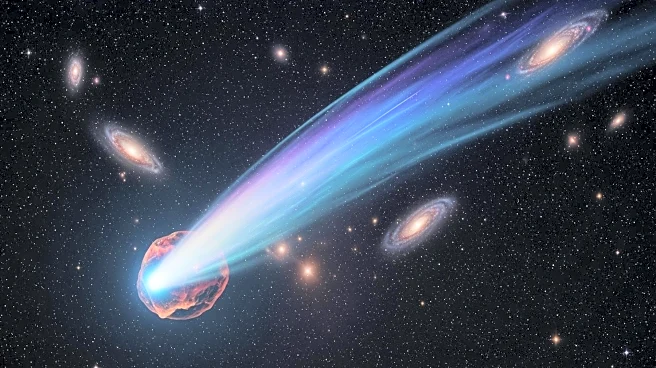What's Happening?
Comet Lemmon (C/2025 A6) and Comet SWAN (C/2025 R2) are expected to be visible in the night sky, providing a rare opportunity for skywatchers. Comet Lemmon, which made its closest approach to Earth on October
21 at 56 million miles away, can be seen with the naked eye due to its 4.5 magnitude brightness. Comet SWAN, slightly dimmer at a 5.9 magnitude, requires binoculars or a telescope for viewing. Both comets are visible in the evening sky, with Comet Lemmon expected to shine brightest around Halloween and through early November. The weather conditions in Delaware and southeastern Pennsylvania are favorable for comet watching, with clear skies predicted.
Why It's Important?
The visibility of Comet Lemmon and Comet SWAN presents a unique opportunity for astronomers and enthusiasts to observe these celestial bodies. Comet Lemmon, visible to the naked eye, offers a rare chance to witness a comet that will not return for over 1,300 years. Comet SWAN, although dimmer, adds to the spectacle for those equipped with telescopes. This event highlights the importance of astronomical observations and the public's interest in celestial phenomena. It also underscores the advancements in technology that allow for the discovery and tracking of such comets, contributing to our understanding of the solar system.
What's Next?
Comet Lemmon will continue to brighten as it approaches Halloween, providing more opportunities for observation. Comet SWAN, while visible, may be more challenging to spot due to its trajectory and brightness. Observers are encouraged to use stargazing apps and seek out dark skies away from city lights to maximize visibility. The next significant celestial event involving comets will be the appearance of Halley's Comet in 2061, offering another chance for skywatchers to witness a famous comet.
Beyond the Headlines
The appearance of these comets raises interest in the study of interstellar objects, such as Comet ATLAS, which is currently being monitored by astronomers. These observations contribute to the broader understanding of cometary behavior and their origins, potentially offering insights into the formation of the solar system. The public's engagement with such events also highlights the cultural and educational value of astronomy, encouraging interest in science and exploration.
